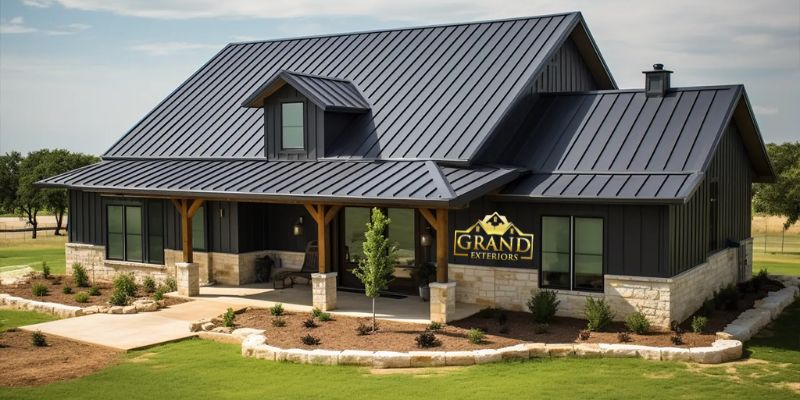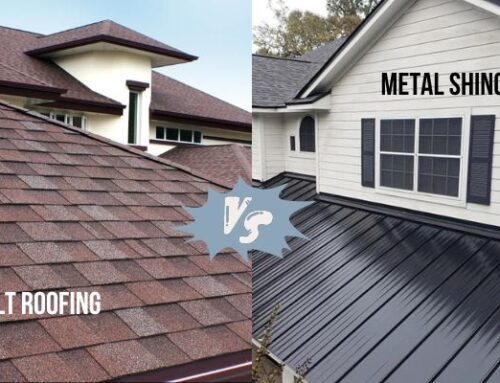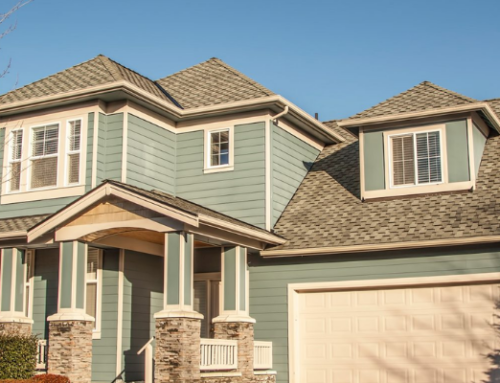Choosing the right roof for your home is a significant decision that requires careful consideration. Not only does your roof protect your home from the elements, but it also plays a crucial role in its overall aesthetic appeal and energy efficiency. With a variety of roofing materials and styles available, it’s essential to weigh several factors before making your selection. In this blog post, we’ll explore some key considerations to help you make an informed choice when selecting your next roof.
1. Climate and Weather Conditions:
Your local climate and weather patterns should heavily influence your choice of roofing material. For instance, areas prone to high winds, heavy rainfall, or snow accumulation may require more durable and weather-resistant materials such as asphalt shingles, metal roofing, or concrete tiles.
Additionally, consider factors like temperature fluctuations and exposure to sunlight, as these can affect the longevity and performance of certain roofing materials.
2. Durability and Longevity:
Investing in a durable roof can save you money in the long run by reducing the need for frequent repairs and replacements. Consider the lifespan of different roofing materials and choose one that offers optimal durability for your budget.
Metal roofing, for example, is known for its exceptional longevity and resistance to fire, insects, and rot, making it a popular choice for many homeowners.
3. Aesthetic Appeal and Architectural Style:
Your roof contributes significantly to your home’s curb appeal and overall architectural style. Take into account the existing design elements of your home when selecting a roofing material and style.
Traditional homes may look best with classic materials like slate or clay tiles, while modern residences often pair well with sleek metal or flat roof designs.
4. Energy Efficiency:
Energy-efficient roofing materials can help reduce your home’s energy consumption and lower utility bills. Consider options such as cool roofs, which are designed to reflect more sunlight and absorb less heat, keeping your home cooler in hot climates.
Additionally, some roofing materials offer better insulation properties, helping to regulate indoor temperatures and improve overall energy efficiency.
5. Maintenance Requirements:
Different roofing materials have varying maintenance needs. While some options may require regular inspections and maintenance to prolong their lifespan, others are more low-maintenance and require minimal upkeep.
Consider your willingness and ability to perform routine maintenance tasks when selecting a roofing material. Asphalt shingles, for example, are relatively easy to maintain and repair compared to more complex roofing systems like slate or cedar shakes.
6. Cost and Budget:
Finally, consider your budget constraints when choosing a new roof for your home. While certain roofing materials may offer superior durability and aesthetics, they often come with a higher price tag.
Evaluate the initial cost of materials and installation, as well as long-term maintenance and repair expenses, to determine the most cost-effective option for your needs.
7. Local Building Codes and Regulations:
Before finalizing your choice of roofing material, familiarize yourself with local building codes and regulations governing roof construction in your area. Certain materials may be prohibited or have specific installation requirements based on local ordinances and zoning laws.
Ensure that your chosen roofing material and installation method comply with all relevant building codes to avoid potential fines or legal issues down the line.
8. Weight and Structural Considerations:
Different roofing materials have varying weights, which can impact the structural integrity of your home. Ensure that your roof’s framing and support system can accommodate the weight of your chosen material.
In some cases, additional structural reinforcement may be necessary to support heavier roofing options such as tile or slate. Factor these considerations into your overall budget and project timeline.
9. Warranty and Manufacturer Reputation:
Look for roofing materials that come with comprehensive warranties from reputable manufacturers. A strong warranty not only provides peace of mind but also reflects the manufacturer’s confidence in the quality and durability of their product.
Research the reputation of different roofing manufacturers and read customer reviews to gauge their reliability and customer satisfaction ratings. Choosing a trusted brand can help ensure a smoother installation process and reliable performance over time.
10. Environmental Impact and Sustainability:
Consider the environmental impact of your chosen roofing material, including its production process, recyclability, and potential for reuse. Opting for eco-friendly roofing materials can reduce your carbon footprint and contribute to sustainable building practices.
Look for certifications such as Energy Star ratings or LEED certification to identify roofing materials that meet rigorous environmental standards and promote energy efficiency.
11. Compatibility with Roof Features and Accessories:
Assess how your chosen roofing material will interact with existing roof features and accessories such as skylights, chimneys, vents, and gutters. Ensure that your selected material can be properly installed around these elements without compromising their functionality or integrity.
Discuss any special requirements or considerations with your roofing contractor to ensure a seamless integration of your new roof with existing features and accessories.
12. Noise Insulation:
Depending on your location and personal preferences, noise insulation may be a crucial consideration when choosing a roofing material. Some materials, like metal roofing, may be noisier during heavy rain or hailstorms compared to others.
If noise insulation is important to you, consider options such as asphalt shingles, which can help dampen sound and provide a quieter indoor environment.
13. Fire Resistance:
In areas prone to wildfires or with strict fire safety regulations, choosing a fire-resistant roofing material is essential for protecting your home and reducing the risk of fire damage.
Look for roofing materials that have undergone fire testing and have a Class A fire rating, indicating the highest level of fire resistance.
14. Color and Reflectivity:
The color and reflectivity of your roofing material can impact the temperature inside your home and the overall energy efficiency of your property.
The color of your roof plays a significant role in managing indoor temperatures. Light-colored roofs reflect sunlight and heat, which can help keep your home cooler in warmer climates, potentially reducing the need for air conditioning. On the other hand, dark-colored roofs absorb more heat and may be more beneficial in colder climates. When choosing the color and reflectivity of your roof, it’s essential to consider your local climate and energy requirements to maximize comfort and energy efficiency.
15. Installation Complexity and Labor Costs:
Some roofing materials require specialized installation techniques and skilled labor, which can increase installation costs and project timelines.
Consider the complexity of installation and labor requirements associated with your chosen roofing material, and factor these costs into your overall budget and planning process.
Additionally, hiring experienced roofing professionals who are familiar with the installation requirements of your chosen material can help ensure a successful and durable roof installation.
16. Future Resale Value:
While choosing a roof based on your immediate needs and preferences is important, it’s also worth considering the potential impact on your home’s resale value.
Certain roofing materials, styles, and colors may have greater appeal to prospective buyers and can enhance the marketability and perceived value of your home.
Research local real estate trends and consult with real estate professionals to gain insight into which roofing options are most desirable in your area and can maximize your home’s resale potential.
Conclusion:
In conclusion, selecting the right roof for your home involves careful consideration of various factors, including climate conditions, durability, aesthetic appeal, energy efficiency, maintenance requirements, and budget constraints. By weighing these factors and consulting with roofing professionals, you can make an informed decision that enhances both the functionality and visual appeal of your home for years to come. Remember, investing in a quality roof is an investment in the protection and value of your home.




